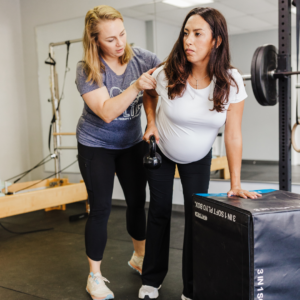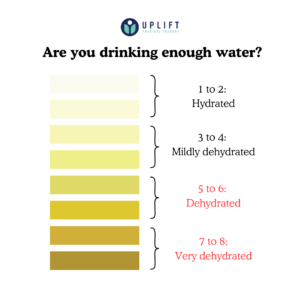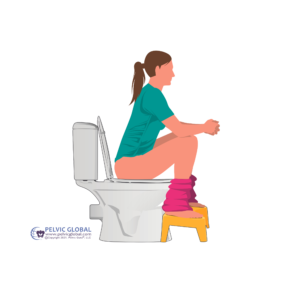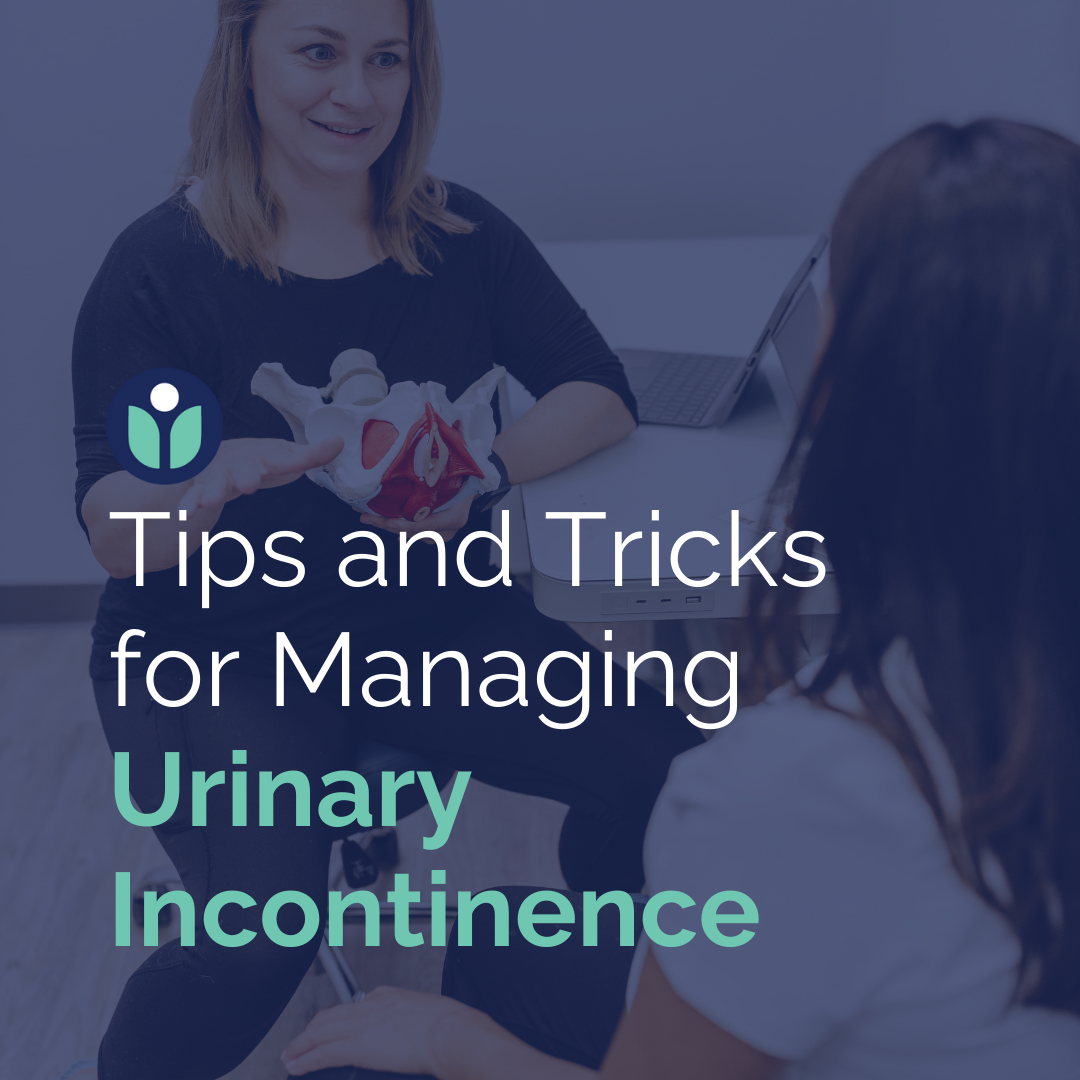Tips and Tricks for Managing Urinary Incontinence
Tips and Tricks for Managing Urinary Incontinence
Urinary incontinence can feel like it has taken over your daily life—limiting your confidence, spontaneity, and even impacting your sense of control.
But here’s the thing: managing incontinence isn’t about resigning to restrictions; it’s about empowering yourself with tools and habits that make a difference.
In this guide, we’ll walk through practical, proven tips that can help reduce leakage and restore a sense of ease and normalcy. From exercises to dietary habits and even bathroom techniques, these small changes can add up to big improvements in your bladder health. Let’s dive into some effective strategies for managing urinary incontinence—because you deserve to live life fully and leak-free.
Exercise!

Every pregnancy is unique, and so is your treatment plan! This pelvic floor therapist is guiding a pregnant patient through exercises designed specifically for her needs, ensuring a safe and effective approach to pelvic health.
Staying active is key, but when it comes to managing urinary incontinence, targeted exercises go beyond the typical workout routine. Think of your core muscles—the diaphragm, back, abdomen, and pelvic floor—as a supportive team for your bladder. Regularly strengthening these muscles can improve the way they manage pressure in your abdomen, reducing unexpected leaks.
Incorporating gentle core and pelvic floor exercises into your daily routine helps build strength, balance, and resilience. Remember, even small movements can make a big difference over time!
If you’re not sure where to start, you’re struggling with exercises, or aren’t seeing the progress you’d like, consulting a pelvic floor physical therapist can make all the difference. They can guide you through exercises tailored to your body’s needs and help you get the most out of your efforts.
Fluid Management

Hydration is key to maintaining pelvic health and overall well-being! This chart shows recommended daily water intake based on your needs, so you can stay fueled and feel your best.
While it may seem tempting to limit your water intake to avoid accidents, dehydration can actually worsen symptoms. When urine becomes too concentrated, it irritates the bladder lining, leading to more frequent urges and even leakage.
Here are a few quick tips about water intake:
- A good rule of thumb is to drink about half your body weight in ounces of water daily (for example, 65 ounces for someone weighing 130 lbs).
- Sipping water throughout the day, rather than chugging, is gentler on your bladder.
- And while you might not want to hear it, sodas, coffee, and tea aren’t always the most helpful—plain water is truly the best choice for bladder health. Don’t worry though, your favorite drinks are still fine in moderation!
Check out this chart below to see how you’re doing:
The Knack
Ever had a sneeze at your desk that sent you running to the bathroom for a quick cleanup? Or maybe you’ve spent sick days coughing AND dealing with unexpected leaks. Even a good belly laugh with a friend can sometimes lead to those unwelcome surprises. The good news? There’s a technique called “The Knack” that can help.
“The Knack,” is a technique that teaches your pelvic floor muscles to engage automatically during moments of increased abdominal pressure. When you contract your pelvic floor muscles right before a sneeze, for example, it helps prevent leakage by closing off the urethra. Practicing this technique regularly helps reinforce this natural reflex, so your body learns to protect itself from leaks more consistently. It’s a small trick with big benefits!
Avoid Bladder Irritants
Just as certain foods can upset your stomach, some can irritate your bladder.
Common triggers—like caffeine, alcohol, acidic foods, and spicy dishes—can cause increased urgency, frequency, or leakage. Keeping an eye on your diet can help you notice patterns and identify which foods might be best to avoid. This doesn’t mean you have to cut everything out permanently; it’s about understanding what works for you. By reducing or limiting irritants, you may find that your bladder feels calmer and you’re less prone to surprise urges.
Here is a list that includes some of the most common bladder irritants:
- Caffeinated beverages: coffee, tea, soda
- Alcohol
- Citrus fruits
- Spicy foods
- Artificial sweeteners
- Processed meats
- Acidic beverages
If you’re unsure whether a specific food or drink is affecting your bladder, keeping a bladder diary can be incredibly helpful. A bladder diary is a tool where you track your fluid intake, bathroom habits, and symptoms over a period of time. This can help you identify patterns and pinpoint which foods or drinks might be causing discomfort. By noting when you feel symptoms arise and what you consumed beforehand, you can make more informed choices about what to avoid.
If you’re interested in trying a bladder diary, please refer to the resources page on our site for access to the UpLift Bladder Diary.
Avoid Constipation
It may seem unrelated, but constipation and bladder health are closely linked. When your bowels are backed up, they can place pressure on the bladder, making it harder for it to fill and leading to urgency or leakage.
Prioritizing regular bowel movements is a huge part of urinary health. Drinking enough water, eating high-fiber foods, and staying active are the foundations for preventing constipation.
Here is a list of common high-fiber foods that can help promote bowel health, making it easier to maintain regularity and prevent constipation. Including these in your diet can also help reduce bladder pressure and prevent urinary symptoms that may be exacerbated by constipation:
- Whole Grains: Foods like whole wheat bread, oats, brown rice, quinoa, and barley are excellent sources of fiber. These provide both soluble and insoluble fiber, supporting healthy digestion and bowel regularity – Beans, lentils, chickpeas, and peas are fiber-rich options that are also packed with protein.
- Fruits: Berries, blackberries, apples, pears, and oranges are high in fiber, especially when consumed with their skins. These fruits provide both fiber and beneficial antioxidants.
- Vegetables: Dark leafy greens, broccoli, brussels sprouts, carrots, and sweet potatoes offer significant fiber content. Eating a variety of colorful vegetables helps ensure that you’re getting different types of fiber.
- Nuts and Seeds: Almonds, chia seeds, flaxseeds, provide fiber as well as healthy fats. These can be added to salads, smoothies, or eaten as snacks .
- Root Vegetables: Foods like parsnips, turnips, and beets are full of fiber and can help improve bowel regularity.
- Fiber-Rich Snacks: Popcorn (without too much butter or salt) and whole grain crackers are also good high-fiber snacks for promoting bowel health .
You can learn more about managing constipation here:
Good Toileting Techniques
How you position yourself on the toilet matters more than you might think. Proper posture can make it easier to empty your bladder fully, reducing the risk of leaks later.
Try placing your feet on a small stool, leaning slightly forward, and relaxing your abdomen as you breathe deeply. Let the urine flow naturally without pushing or straining. Adopting these habits can lead to better bladder health overall, helping you feel more in control and comfortable day-to-day.

Toilet posture matters! Proper positioning can help reduce strain and support healthy bowel movements, making it easier on your pelvic floor and digestive system. Image used with permission from Pelvic Guru®, LLC as a member of the Global Pelvic Health Alliance Membership (GPHAM).
Take your time when urinating, do not rush, or push the urine out. Remember to breathe deeply when you’re using the bathroom to reduce strain on both your bladder and bowels. You can learn more about toileting techniques here. (Link to toileting techniques blog)
In Conclusion…
Taking control of urinary incontinence starts with small, proactive steps that can make a big difference in your daily life. By incorporating exercises that target the pelvic floor, managing your fluid intake, and being mindful of bladder irritants, you can significantly reduce symptoms and improve your quality of life.
Remember, there’s no one-size-fits-all solution, and if you find that things aren’t progressing or if you have concerns about your symptoms, it’s always a good idea to consult with a pelvic floor physical therapist. They can help guide you through personalized strategies that work best for your unique needs.
Your comfort and confidence matter; it’s time to take charge of your bladder health and enjoy life without leaks. If you need more resources or have questions, please don’t hesitate to reach out—we’re here to help!
Thanks for reading!
Contact Us
UpLift Physical Therapy Website
Phone: 210-468-7398
Follow us on social media: Instagram @upliftptp

